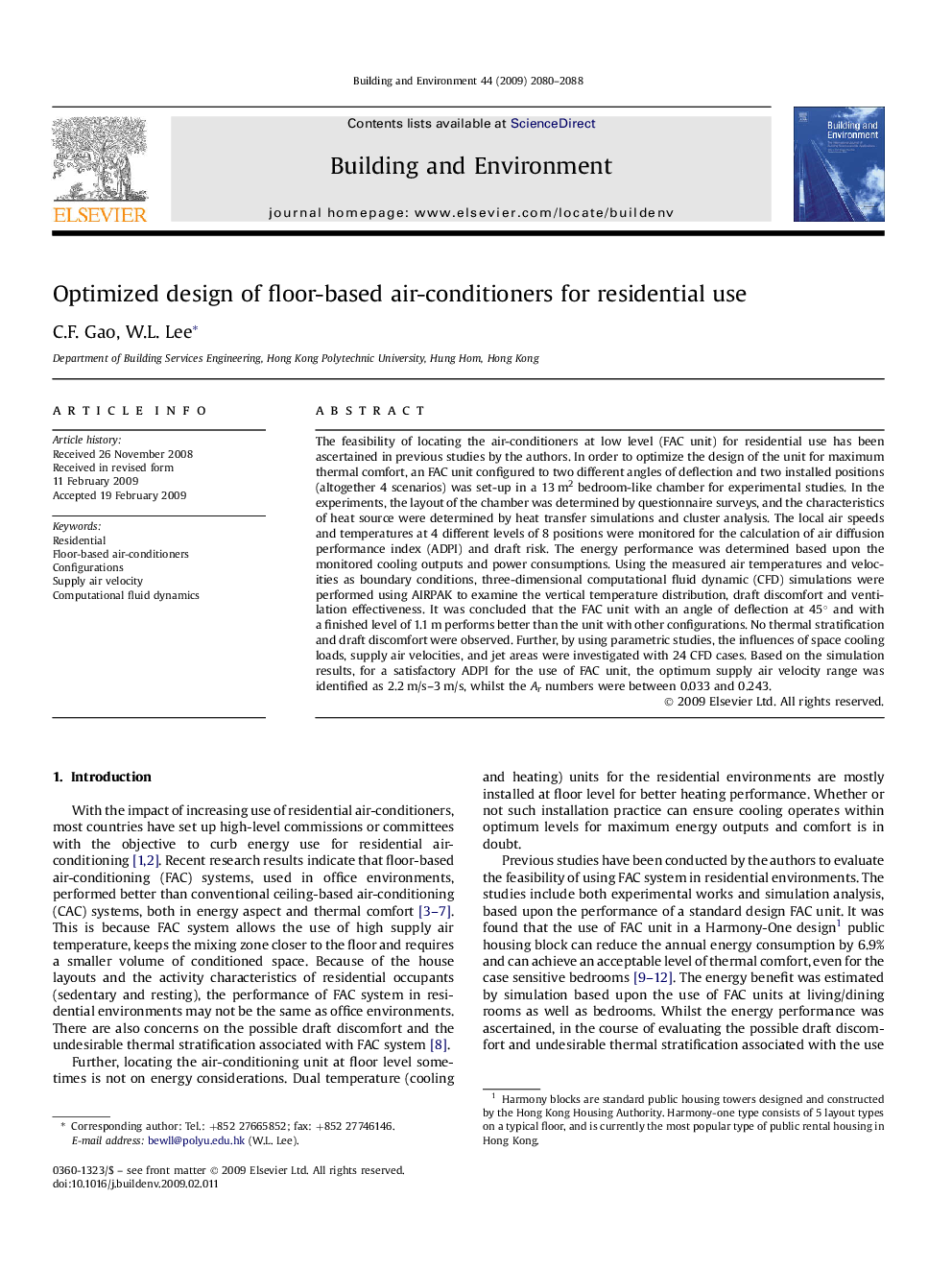| کد مقاله | کد نشریه | سال انتشار | مقاله انگلیسی | نسخه تمام متن |
|---|---|---|---|---|
| 249655 | 502621 | 2009 | 9 صفحه PDF | دانلود رایگان |

The feasibility of locating the air-conditioners at low level (FAC unit) for residential use has been ascertained in previous studies by the authors. In order to optimize the design of the unit for maximum thermal comfort, an FAC unit configured to two different angles of deflection and two installed positions (altogether 4 scenarios) was set-up in a 13 m2 bedroom-like chamber for experimental studies. In the experiments, the layout of the chamber was determined by questionnaire surveys, and the characteristics of heat source were determined by heat transfer simulations and cluster analysis. The local air speeds and temperatures at 4 different levels of 8 positions were monitored for the calculation of air diffusion performance index (ADPI) and draft risk. The energy performance was determined based upon the monitored cooling outputs and power consumptions. Using the measured air temperatures and velocities as boundary conditions, three-dimensional computational fluid dynamic (CFD) simulations were performed using AIRPAK to examine the vertical temperature distribution, draft discomfort and ventilation effectiveness. It was concluded that the FAC unit with an angle of deflection at 45° and with a finished level of 1.1 m performs better than the unit with other configurations. No thermal stratification and draft discomfort were observed. Further, by using parametric studies, the influences of space cooling loads, supply air velocities, and jet areas were investigated with 24 CFD cases. Based on the simulation results, for a satisfactory ADPI for the use of FAC unit, the optimum supply air velocity range was identified as 2.2 m/s–3 m/s, whilst the Ar numbers were between 0.033 and 0.243.
Journal: Building and Environment - Volume 44, Issue 10, October 2009, Pages 2080–2088